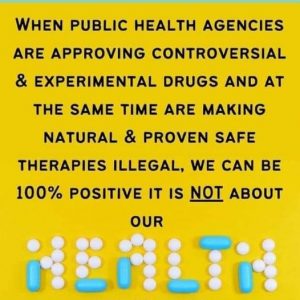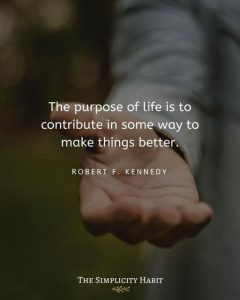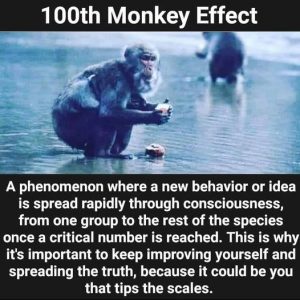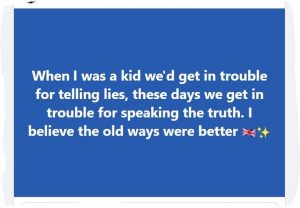
Doniel Katz writes:
There’s something I need to get off my chest.
I’m an Ultra-Orthodox, Chassidic, Hareidi Jew. I live in Jerusalem, in an area that is exclusively Ultra-Orthodox Hareidi for street after street, suburb after suburb, for miles and miles. In all of these neighborhoods where the roads are blocked off and no cars drive on Shabbos, each black-hat-wearing family has many many children and literally no TV’s. I personally only ever wear black and white clothes, my wife only dresses in Chassidic levels of tznius (modesty), and my boys and girls all attend mainstream Hareidi Chassidic schools where the main language is Yiddish. My kids don’t and never will have smartphones, nor have they ever been on the internet at all. Period. They don’t know what social media is and they’ve never seen a movie — not even Disney animation.
Having lived exclusively immersed in this culture for the last 21 years, I think I’m sufficiently qualified and well-researched enough to state that the consistent depiction of Hareidim and Torah Judaism by mainstream media, from Netflix to the daily news, is somewhere between delusion, slander and the literal equivalent of racism. If you consider yourself less closed-minded than how you imagine we Hareidim to be, then permit me to share a few personal details about my family, and other families in our neighborhood, to see how well your mental narrative matches up to reality:
– Besides learning Torah each day, most of the men in our neighborhood work full or part-time.
– Many women in our area work. Some even manage their own business or company. These are not special or “liberated” women — it’s so normal here it’s not even a discussion point.
– My wife is a full-time mother by choice, who despite attending an Ivy League College, finds it a profound and meaningful thing to dedicate her life to. If she didn’t, she’d go get a job. Mind you, she also attends Torah classes each week, works out with both a female fitness coach (who’s gay) and a frum Pilates instructor, writes and edits articles for a couple global websites and magazines, and personally mentors a number of women. None of this is seen as unusual.
– Kids in our community go to Torah schools where they learn (surprise!) Torah. They are fluent in three languages from a young age and the boys even read and understand a fourth (Aramaic). All the kids learn grammar, math and science. Weekly after-school activities have included music (violin, drums, piano), Tae Kwon Do, swimming, art, woodworking and robotics. The girls’ school teaches tools of emotional intelligence. The principal of the boys’ school doesn’t hesitate to refer to kids to OT if needed. I practice meditation with my children multiple times each week. None of our kids think the world is literally 6,000 years old. They devour books about science and think it’s cool. They know dinosaurs existed and don’t find that existentially threatening. They have a telescope with which they love to watch the stars.
– The women in my family (like the men) only dress modestly according to Hareidi standards. The girls don’t find this burdensome or oppressive. Period. They aren’t taught that beauty is bad. They’re certainly not taught to hate their bodies, God forbid. Each morning when they get dressed, they are as happily into their own fashion and looking pretty as any secular girl is. They just have a different sense of fashion than secular culture dictates. (Unfortunately for me, it’s no cheaper.)
– The local Hareidi rabbis we receive guidance from are deep, warm, sensitive, supportive and emotionally intelligent. If they weren’t, we wouldn’t go to them.
– My boys assume they will grow up to learn Torah, as much as they want to, and then when they’re ready, get a good job or learn a profession to support whatever lifestyle they choose. My girls assume they’ll be wives and mothers (which they can’t wait for) but they’re also warmly encouraged to train in whatever other profession they desire. (My 9-year-old daughter, chatting with her friend in the living room, just commented, “I want to be a mother and a teacher and an artist.” Her friend replied, “I’m going to be a ballet teacher.”) All options are on the table, and their future seems bright.
– We love living in modern Israel, feel proud and blessed to be here, and frequently count and celebrate its blessings. Everyone in my area votes. Sometimes not even for Hareidi parties. I pay taxes. (And they’re expensive!)
– As a Hareidi person, I’m glad we have Hareidi representation in the government — though I don’t always love or approve of how the Hareidi politicians act, or what they choose to represent. For the record, I’m equally dubious about secular politicians, as well. ??
– While I don’t spend much time in Tel Aviv, I do have a few close Hareidi entrepreneur friends who have founded high-tech start-ups there, and are — Boruch Hashem! — doing very well.
– We don’t hate all non-religious people. Our kids don’t throw stones at passing cars on Shabbos. I doubt they even know anyone who would do that or think that it’s ok. We frequently talk about the Torah value of caring for and being compassionate towards everyone. As a family, we proactively try to find ways to judge others favorably (even those people who throw stones at passing cars on Shabbos.)
– We invite all manner of religious and secular Jews to join our Shabbos meals each week and the kids are open, happy, and confident to welcome everyone. (No, we’re not Chabad.) One of the many reasons for having such guests at our table is to teach the kids this lesson.
– While we would technically be classified as right-wing and we don’t at all buy the modern “Palestinian” narrative, we certainly don’t hate all Arabs, nor do we have any desire to expel them all from the land. We warmly welcome anyone seeking to dwell here with us in peace and we are pained and saddened to see the suffering and loss of lives of all innocent Arab families and children — as would any decent human being.
– Of the few local families I know whose kids no longer identify as religious, none at all chose to disown their kids. The very thought, in such lovingly family-dedicated communities, is hard to imagine. I’m not saying it doesn’t happen, I’m just saying it’s not as common as it’s made out. Rather, these families have tirelessly, profoundly, compassionately committed to maintaining any connection with their children, and to emphasize that, no matter what, family is the most important thing. Because it is.
– We aren’t just living our life blindly, dogmatically following empty religious rules; rather, we are frequently engaged with, exploring and discussing Torah’s richness, depth and meaning. Our kids honestly love learning Torah, praying and doing mitzvos. They’re visibly excited about Shabbos and festivals. This lifestyle is in no way oppressive or burdensome for them. If you suggested to them it was, they’d laugh and think you were crazy.
– We Hareidim are normal people: we laugh, we cry, we buy too much Ikea furniture, and we struggle with all of life’s daily ups and downs, just like the rest of you. Some of our communities are more healthy and balanced, some are less so; some of our people are warmer, nicer and more open, some are more closed, dogmatic and judgmental; some of our leaders are noble and upstanding, and some are quite frankly idiots…JUST LIKE ANY SECULAR NEIGHBORHOOD IN THE WORLD TOO. But having grown up living a secular lifestyle myself, and today being Hareidi-by-choice, I can testify that in these communities there is generally a greater and more tangible sense of well-being, warmth, tranquility, connection and meaning. We love and feel blessed to be living this life and wouldn’t want any other.
If this description of Hareidi life is hard to swallow, be careful not to push back with the often-used defenses like: “Well, you’re just an exception to the rule…”, “You’re just American Hareidim”, “You’re baalei teshuvah”, “Well, I know a bunch of Haredim that aren’t like that at all”….because the truth is, while there might be many Hareidim who aren’t like what I described above, it’s still an accurate description of literally hundreds of thousands of Hareidim in Israel and the US — a decent portion of all Hareidim in the world. Which is my very point — how come you never see this significant Hareidi demographic represented in the media, television series, or the news? How come we mostly see the darkest and most problematic cliches instead?
And finally, if all the facts I’ve listed above about our communities are hard for you to accept as true, then perhaps the image you have in your head about Hareidim is less based on facts and reality and more based on stereotypes, fear, hate, and discrimination — like any other form of prejudice in the world.
Care to prove me wrong? Well, you’re welcome to come argue it out with me and my family at our Shabbos table on Friday night. It would be a joy and honor to have you.








